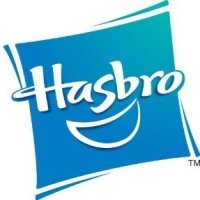
 Kids will find plenty of Hasbro toys under the tree this year, from Tonka trucks and Transformers to classic board games such as Scrabble and Monopoly. But for Hasbro Inc. (HAS-N46.82-0.43-0.91%) investors, Christmas came early.
Kids will find plenty of Hasbro toys under the tree this year, from Tonka trucks and Transformers to classic board games such as Scrabble and Monopoly. But for Hasbro Inc. (HAS-N46.82-0.43-0.91%) investors, Christmas came early.
Buoyed by a string of better-than-expected quarterly results, shares of the world’s second-biggest toy maker have soared about 70 per cent in the past 12 months, trouncing the 20-per-cent gain of arch-rival Mattel Inc. (MAT-Q23.69-0.25-1.04%)
Why are Hasbro shareholders having all the fun?
Certainly, the company’s core toy business is performing well. Hasbro’s new Nerf Stampede rapid-fire dart gun, for instance, was the most successful launch in the brand’s history. And Metal Fusion Beyblades are selling “very, very well” since Hasbro relaunched the popular spinning tops this year, chief executive officer Brian Goldner said on the third-quarter conference call last month.
But there’s more to Hasbro’s story than a few hot toys.
Aiming to transform itself from a traditional toy maker into a diversified entertainment company, Hasbro is leveraging its stable of well-known brands to tap new sources of revenue including television, movies, video games and wireless apps. You can now play Scrabble on your iPhone, build a virtual property empire with the new Monopoly Streets 3D video game or watch the Transformers wreak destruction on the big screen.
And remember the game Battleship? Get ready for Battleship, the movie, likely in 2012.
“We’re in the very early innings of this strategy. We’re going to deliver products to consumers where they want them, when they want them, any time and anywhere,” Mr. Goldner said at Hasbro’s investor update in September.
Using the Idiot Box
TV is a key component of Hasbro’s diversification strategy. In October, Hasbro launched a kids cable channel, The Hub, in a 50-50 joint-venture with Discovery Communications. Formerly called Discovery Kids, the channel reaches 60 million U.S. households and much of the content is produced in-house by Hasbro Studios, including shows based on toys such as My Little Pony, G.I. Joe, Transformers and Pound Puppies.
If the channel succeeds as analysts expect, the payoff could be substantial in terms of merchandise spinoffs, advertising revenue and program sales to overseas markets. “Over the next several years, we believe television has the potential to add hundreds of millions of dollars in incremental revenue to Hasbro’s top line,” Deborah Thomas, Hasbro’s chief financial officer, told investors.
Complementing its TV initiative, Hasbro also stands to cash in on a string of upcoming movie releases for which it owns or licenses the toy rights, including Transformers 3, Thor and Captain America (all slated for 2011) and the re-release of Star Wars films in 3D (starting in 2012). There’s even a Monopoly movie in the works.
To get its toys into the hands of more kids around the world, Hasbro is aggressively expanding in emerging markets such as Asia, Eastern Europe and South America. But instead of relying on third-party distributors, the company is building its own bricks and mortar operations to make the most of these fast-growing markets.
“I think the opportunities overseas are vastly underrated or underappreciated,” said Drew Crum, an analyst with Stifel Nicolaus. “They’ve got a lot to look forward to in the next two to three years between the performance of the core business, the international expansion, the television initiative and all the entertainment properties they have. There’s a lot to this story.”

To be sure, the toy industry has its share of risks, including intense competition, fickle consumer tastes, volatile commodity costs and vulnerability to currency swings. The industry is also highly seasonal, with the third and fourth quarters accounting for about two-thirds of Hasbro’s annual sales.
Yet even in a challenging economy, Hasbro has demonstrated an ability to generate shareholder value. Since 2001, earnings have grown at a compound annual rate of 29 per cent, and the quarterly dividend has climbed more than eight-fold, to 25 cents from just 3 cents. Hasbro also returns cash to shareholders via stock buybacks, including $629.2-million (U.S.) of share repurchases in the first nine months of 2010.
The way Hasbro is growing, analysts say more buybacks and dividend hikes are likely. The company has $498-million of cash on its balance sheet and the potential to generate $500-million to $600-million of free cash flow annually, according to UBS Securities analyst Robert Carroll.
Trading at about 14.8 times estimated 2011 earnings, the stock may be fully discounting next year’s results. But “what we’ve tried to impress upon clients is if your time horizon is two, three or five years in duration, this is arguably the most compelling growth story we have in our coverage universe,” Mr. Crum said.
-TheGlobeAndMail





